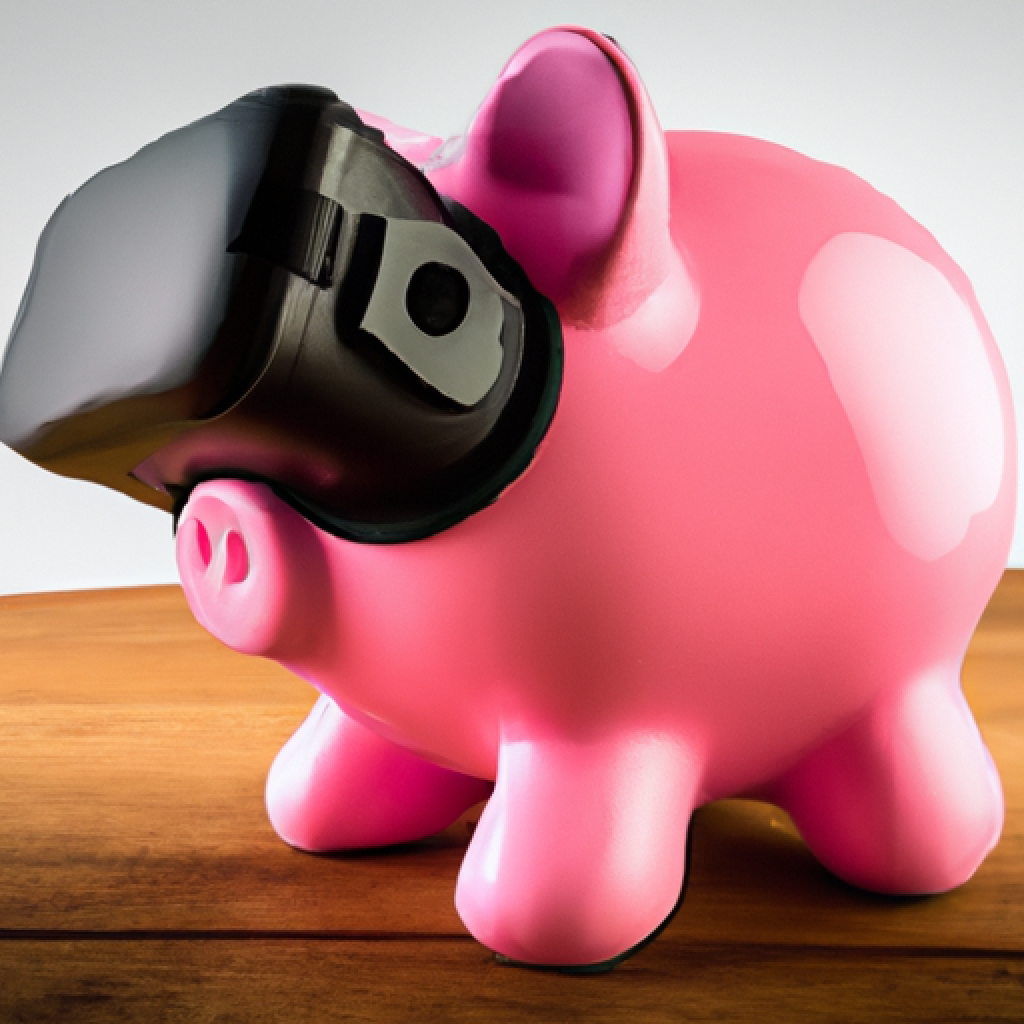What Are The Downfalls For Cost Of The VR?

So, I’ve been doing some research on the cost of virtual reality (VR) and boy, do I have some insights to share. VR has been gaining momentum in recent years, with more and more people jumping on the bandwagon to experience this immersive technology. However, there are certainly some downsides when it comes to the cost of VR. Whether it’s the initial investment in the hardware, the pricey games and applications, or the ongoing expenses, it’s important to consider these factors before diving headfirst into the virtual world. Let’s break it down and see what the true downsides are for the cost of VR.
Expensive Hardware
The cost of virtual reality (VR) can often be a major deterrent for many people looking to enter the world of immersive experiences. One of the biggest reasons for this is the high initial cost of the hardware required. VR headsets and gaming consoles can come with a hefty price tag, often costing hundreds or even thousands of dollars. This can make it difficult for individuals on a tight budget to afford VR technology.
In addition to the cost of the main VR headset, there is also the need for additional peripherals. These can include controllers, sensors, and other accessories that enhance the VR experience. While these peripherals may not be as expensive as the main headset, they can still add up and increase the overall cost of owning and using VR equipment.
Another drawback to consider is the need for hardware upgrades. As technology advances, new and more powerful VR equipment is released. This means that in order to keep up with the latest advancements and maintain a high-quality VR experience, users may need to invest in regular upgrades to their hardware. These upgrades can be costly and can further contribute to the overall cost of VR.
Software and Content Costs
Once the hardware is in place, there are additional costs associated with VR in terms of software and content. One of the main expenses is the price of VR games. Just like regular video games, VR games can be quite expensive, especially if you want to build a diverse library of titles. The cost of purchasing multiple games can add up quickly and may not be feasible for everyone.
Another cost to consider is the subscription fees for VR platforms. Some VR platforms require a monthly or annual subscription in order to access certain features or exclusive content. These fees can add to the overall cost of VR and may need to be budgeted for.
It’s also important to note that VR content is constantly evolving and being updated. This means that users may need to spend additional money to keep their VR experiences fresh and up-to-date. This can include purchasing downloadable content (DLC) or expansions for games, as well as staying on top of new releases and updates.

Maintenance and Repair Costs
Just like any other piece of technology, VR equipment can break or malfunction. When this happens, users may incur repair costs to get their equipment up and running again. Repairing damaged VR equipment can be expensive, especially if it requires specialized repairs or replacement parts.
Speaking of replacement parts, it’s worth noting that these can also come with a significant price tag. Whether it’s a faulty controller or a broken sensor, users may need to purchase replacement parts in order to continue their VR experience. These costs can add up, especially if multiple parts need to be replaced over time.
In addition to the cost of repairs and replacement parts, there can also be customer service or warranty coverage issues to consider. If a user encounters an issue with their VR equipment, they may need to seek assistance from customer service. Depending on the quality of customer service and the terms of the warranty, this process can be time-consuming and frustrating. It may even result in additional costs if the warranty coverage does not fully address the problem.
Learning and Development Costs
Another factor that contributes to the cost of VR is the investment in learning and development. If someone is new to VR, they may need to undergo training in order to fully understand and utilize the technology. This can involve both time and financial investments.
Costs associated with learning VR can include the purchase of learning tools such as tutorials or courses. These resources can provide individuals with the knowledge and skills they need to effectively use VR in various applications. However, it’s important to note that these learning tools often come at a cost, which adds to the overall expenses of VR.
Furthermore, as VR technology continues to evolve, individuals need to stay updated on the latest developments and advancements. This may involve investing in additional training or educational resources to ensure their skills and knowledge remain relevant. This ongoing cost of keeping up with VR advancements can contribute to the overall expense of using VR.

High Energy Consumption
While it may not be the first thing that comes to mind, there are energy costs associated with using VR. Virtual reality can be quite demanding on a computer or gaming console, requiring significant processing power and graphics capabilities. As a result, VR experiences can consume a lot of energy, leading to higher electricity bills.
To mitigate the energy consumption associated with VR, users may need to invest in better energy solutions. This can include upgrading to more energy-efficient devices or making adjustments to their home’s energy infrastructure. These investments can lead to additional costs, further increasing the overall expense of VR.
In addition to the financial cost, the high energy consumption of VR also has environmental implications. Increased energy usage contributes to the carbon footprint and can have a negative impact on the environment. The environmental cost of high energy consumption is an important factor to consider when evaluating the overall drawbacks of VR.
Space Requirements
Creating an immersive VR experience often requires a dedicated space within which to move and interact. This means that users need to have enough physical room to fully enjoy the benefits of VR. However, for individuals who live in small apartments or have limited space, this can be a challenge.
In some cases, users may need to consider the costs of renovating their existing space or even buying new space to accommodate their VR setup. Renovations can add significant expenses to the overall cost of VR, as they may involve structural changes, wiring, or other modifications to create the ideal VR environment. Likewise, purchasing new space solely for VR purposes can be a considerable financial commitment.
The housing situation of individuals can also affect their ability to use VR. Renters, for example, may not have the freedom to make permanent modifications to their living space, limiting their options for setting up a dedicated VR area. Similarly, those living in shared accommodations may face additional challenges in finding suitable space for VR.

Health and Safety Concerns
While the immersive nature of VR can provide thrilling experiences, it also brings potential health and safety concerns. These concerns can result in additional costs for users.
One of the main health risks associated with VR is the potential for motion sickness or nausea. For individuals who are susceptible to these ailments, the use of VR can be unpleasant or even detrimental to their well-being. Seeking medical attention or potentially investing in medications or remedies to alleviate these symptoms can add to the overall cost of VR.
Additionally, given the immersive and physical nature of VR experiences, there is a need for protective gear. This can include wrist straps, knee pads, or even full body suits to ensure the safety of users. The cost of purchasing and maintaining these protective gears can be an additional expense to consider.
In some cases, the potential for injuries or accidents may lead to the necessity of insurance coverage specific to VR. This can add to the overall cost of using VR, as insurance premiums may need to be paid regularly to safeguard against any potential damages or injuries that may occur during VR use.
Costs of Virtual Reality in Business
While this article has primarily focused on the costs of VR for personal use, it’s important to also acknowledge the expenses associated with VR in a business context. Many businesses are investing in VR technology for various purposes, such as training, marketing, or simulation. However, these investments can come with their own set of challenges and costs.
Investing in VR technology for business purposes can be a significant expense. This can include the purchase of high-quality VR equipment, software licenses, and any additional hardware or peripherals needed to support business operations. Depending on the scale and scope of a business’s VR initiatives, these costs can quickly add up.
Furthermore, businesses often need to consider return on investment (ROI) concerns when implementing VR. While VR can offer numerous benefits, such as improved training effectiveness or enhanced customer engagement, the financial returns may not be immediate or easily quantifiable. The time and resources required for integration, training, and measuring ROI can all contribute to the overall cost of VR in a business setting.
Certain industries may also face adoption difficulties or specific barriers to implementing VR. For example, industries that require strict adherence to regulations or have unique operational constraints may find it more challenging to incorporate VR technology. These challenges can increase the costs associated with VR implementation, as additional resources may be needed to address industry-specific requirements.

Internet and Connectivity Costs
In order to fully utilize the capabilities of VR, a high-speed internet connection is often necessary. VR experiences typically rely on fast and reliable internet access to download and stream content, as well as to facilitate multiplayer interactions. For users who do not already have a high-speed internet connection, this can result in increased internet bills if they need to upgrade their service.
In some cases, certain VR experiences may require additional hardware for connectivity. This can include wireless adapters or routers that ensure optimal performance and reduce latency during VR use. These hardware upgrades, while necessary for the best VR experience, can incur additional costs.
It’s important to note that these internet and connectivity costs are ongoing in nature. Users will need to factor in the monthly internet bills, as well as any potential upgrades or maintenance required to ensure a seamless VR experience.
Social Costs of VR
While VR has the potential to provide immersive and engaging experiences, it can also have social drawbacks. The very nature of VR, which isolates users from the physical world and places them in a virtual environment, can impact social interaction.
For some individuals, the use of VR may lead to decreased face-to-face interaction with family and friends. This can result in a sense of isolation or detachment from real-world relationships. The social cost of limited social interaction is an important factor to consider when assessing the overall costs of VR.
Additionally, there may also be potential mental health costs associated with VR. Spending extended periods of time in a virtual world can have psychological impacts, such as increased feelings of disconnection or even addiction-like behaviors. Addressing these mental health concerns may require seeking professional help or investing in mental health resources, which can add to the overall cost of VR.
On the other hand, to mitigate the social drawbacks of VR, users may choose to invest in social VR platforms. These platforms aim to bridge the gap between virtual and real-world social interactions by providing opportunities for users to connect and interact with others in the virtual space. However, participating in these social VR platforms can involve additional costs, such as subscriptions or in-platform purchases.
In conclusion, while virtual reality offers an exciting and immersive experience, it is important to consider the various costs and drawbacks associated with this technology. From the high initial cost of hardware to ongoing expenses such as software, maintenance, and learning, VR can be a significant financial investment. Additionally, health and safety concerns, space requirements, and social impacts should also be taken into account. Despite these drawbacks, many individuals and businesses find the benefits of VR to be worth the cost, but careful consideration and planning are essential before diving into the world of virtual reality.








